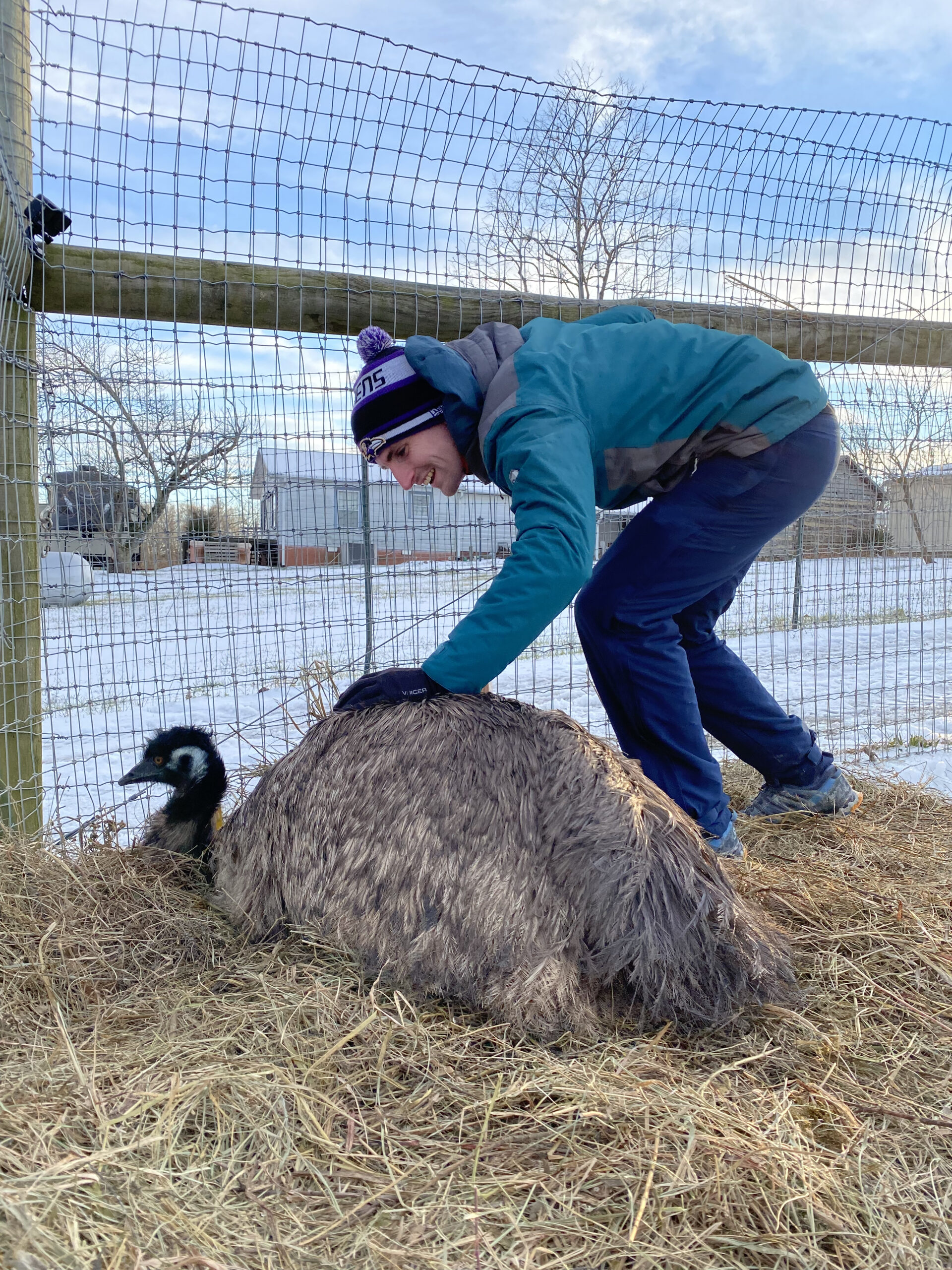In order to better understand the reproductive behaviors of non-avian dinosaurs, we turn to modern analogues in the present, particularly birds. In terms of representing the size of maniraptoran dinosaurs and their eggs, the best modern equivalents are the flightless ‘ratite’ birds of the order Palaeognathae. In particular, there are remarkable analogues in the traits of oviraptorosaurs and the emu, Dromaius novaehollandiae. They are both ground nesting theropods producing near-symmetrical eggs that are pigmented with blue-green color (from biliverdin). Emu eggs are also ornamented, one of the rare extant bird eggs with this feature.
In collaboration with Amaroo Hills emu farm in Guilford County, NC, I have been investigating the remarkable nesting system of emus. The complexity of the social system during the mating season is somewhat understood, and suggests a sequential polygynadrous system where females mate with a single male until he starts brooding his nest, before she moves to another nest and another male, and so on for the duration the mating season. What is less understood is the variation in the eggs themselves, and how they relate to mating behavior. I am interested in variation of eggs within this population and its possible causes.
